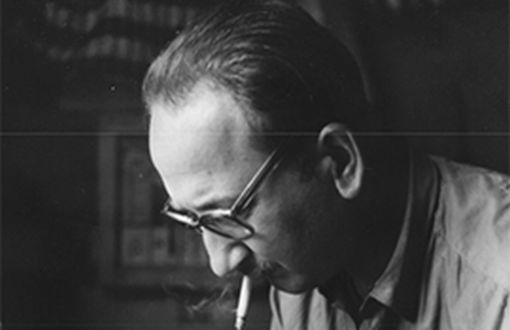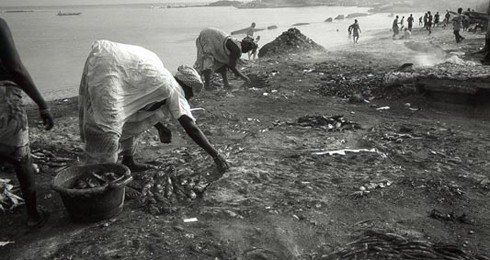A warm, upbeat voice, a spontaneous kindness... Gabi Jimez accepts the idea of a meeting at the first phone call. We fix an appointment. Skype, which he quickly masters thanks to his daughters, allows us to overcome the geographical distance. Marvel of technology, although he is on the other side of the Alps, I am suddenly in the house of the artist, some fifty kilometers from Paris, in the Parc du Vexin (Val d'Oise). Wandering in the living room, in the garden, in the atelier; then a small ballad among the many recovered objects.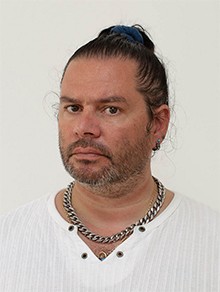
Gabi Jimenez has not always been sedentary. Born in a slum, he lived in a caravan, a nomad for 30 years at the mercy of evictions. "They were even wilder than today", he recalls, "At that time there were no warnings or procedures." This past doubtlessly explains his militant path: engaged for more than twenty years in the Advog(Association Voyageurs-gadjé), this jovial fifty year-old also intervenes in schools and delivers on request the Tikno Musée with its 800 works. "These are objects of everday Gypsy life that I collect, which I believe are very helpful to flip the negative representations projected on our world."
Gabi Jimenez appears to have lived several lives in one. Initially seller of scrap metals, then guitarist, worked a bit in the advertising and graphic design sector, languages that has reverberated into his art. Bright colors, repetitive forms, variable geometries of wedged bodies animate the work of this internationally recognized artist.
"During the Second World War, Picasso responded to a Nazi who asked him about his painting Guernica 'Is it you who did this?', 'No, you'. I can say the same thing about my paintings. It's not me who did them, they are the result of what the society does to our people!".
Fragments of a casual conversation
You say that some Gypsies have become artists as a result of a conversion, what do you mean exactly?
I come from a family of Kale Gypsies. We speak Andalusian. We dance the flamenco for generations. This is our "gitanity" that continues to be transmitted. In addition to music, we are landscapers, florists... We have a special skill that comes from our crafts: we know how to handle lace, tin, plants, baskets... this crafstmanship has allowed some of us to become artists, to make a conversion in arts when our have began to disappear. In fact we are not inexperienced, rather we have a great capacity for adaptation that allows us not to depend on others. Having structured our lives according on travelling reflects exactly this faculty of knowing how to adapt.
And there is also contamination...
We feature many inspirational elements that have proved fruitful, and which are contaminated with other elements. Flamenco, for example, is nothing but a mix of Arab, Jewish and Gypsy cultures, forbidden, persecuted and driven out of Spain by the Catholic monarchs. These different artistic expressions are mixed in the large cauldron of flamenco.
We owe jazz manouche, the so-called French Jazz, to Django Reinhard. He was able to seize the sounds of American blacks slaves' descendants and mix the African influences of this music with the sounds from the caravans. The problem is that this cultural heritage that now belongs to the heritage of France, is not recognized as such. Biréli Lagrène says that when he plays in the United States they consider him a jazz musician, but in France he is perceived only as a manouche musician.
How would you define this figure of the Gypsy artist in the French society?
Today, in France, artists defined Gypsies - a generic category which in fact contains a multitude of backgrounds and realities - are super connected. We have all pretty much gone beyond the stage of survival and travelling and we were able to set up a critical thinking and an artistic device. But I would say that nonetheless we have a common attitude to towards art. For example, we do not applaud the artistic performance. A scrap metal seller has much merit as us, if not more. When we are gratified, we do not assume an honorary title, it does not impress us. For us, there's no place for the supremacy of art that can be found elsewhere.
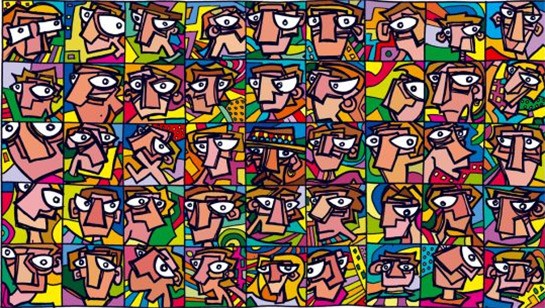
44 gadgé et un gitan. Gabi Jimenez
After all, is it possible to about a Roma culture?
Yes, certainly, there is a social and cultural base that influences the artistic interpretation. There's no doubt to it. But this culture must be preserved, must continue to circulate, be inseminated, returned to the community in the broadest sense, and be expressed in the contemporary context. I, for one, do not want to blend in the category of Gypsy art, I avoid at all costs to convey the idea that there is a specific Roma culture at the base of my artistic work.
It would be folklore. I never tire of repeating it: I'm a Gypsy artist, not the opposite. My works should arouse anger and be accessible to all citizens. And when I say "anger" I mean that we should not conform to what is expected of us, we must not stop within a perimeter assigned to Gypsy culture and stay isolated. And it is extremely difficult because we are systematically placed on the edge, on the outskirts of the art market, the artistic sphere is sealed. This explains why some people produce works to please the Gadje. Their choice is dictated by the need to survive. It is a perverse phenomenon that I would not for anything in the world want to participate.
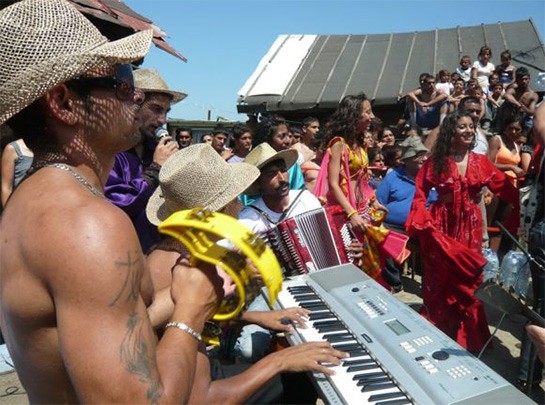
Festival des bidonvilles (Slovaquie) Photo Gabi Jimenez
Why do you define yourself primarily as a painter and not as a musician?
At first I wanted to be a musician, but I settled for giving some lessons to celebrities. I collaborated with the "Ogres de Barbak", I followed them in Slovakia at the festival of the slums. An unforgettable moment. We wanted to go to these people so they could feel important.
I also wrote a text in the latest issue of the "Etudes tsiganes" journal about flamenco. I asked several personalities such as Paco Suarez, Frédo, Alexian Santino Spinelli, Antonio Maya and Boboi, to tell this music, to explore it with me.
But I am first and foremost a painter. Besides, I mke my living from painting and my artistic work. I was drawn very early by a passion for art. I am the first painter of my family. I hope to follow the path traced by my teachers, that furrow that they dug in me. I refer in particular to Basquiat, Pollock, Dubuffet, Picasso, Van Gogh and Cezanne.
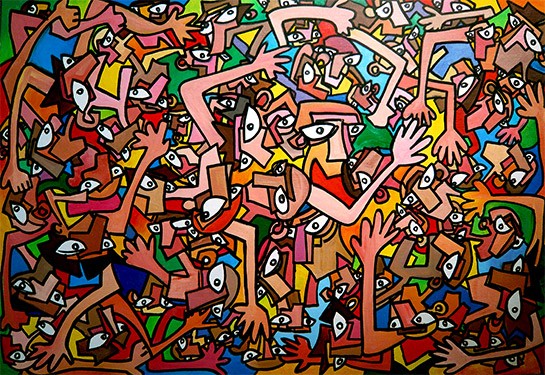
«Extermination», Gabi Jimenez
And in all this, the "gabisme"?
The "gabisme" (the style invented by the artist) was born from the music that I listened permeating me with the work of these painters. When we are faced with what they have created, we come to move away from a realistic vision to let their creations operate in us. I want to do the same thing with my work by imposing the established art institution, and I want to do it with my memory of a Gypsy, this collective memory steeped in discrimination, racism and xenophobia. My exhibitions are designed on paper and are structured around these main themes. And that's why when people come to see what I produce, they discover, beyond my work, something specific: genocide, the daily relegation... I would like to restitute the creations that arise from this rage back to humanity, to a universal dimension.
Click here for the details of Babelmed Project "R.O.M. Rights of Minorities"





